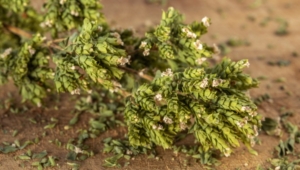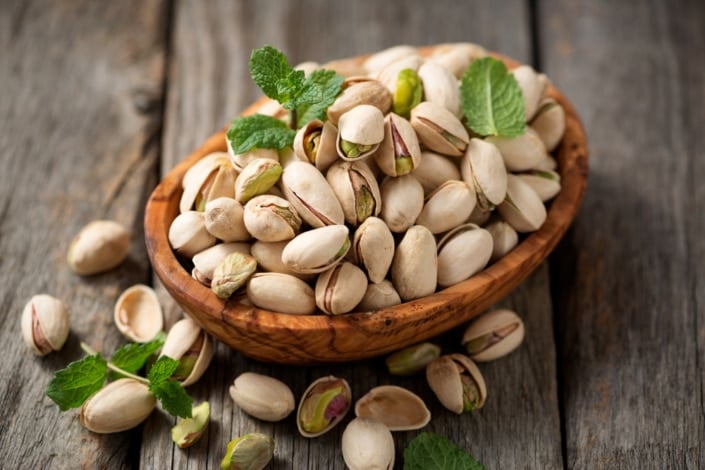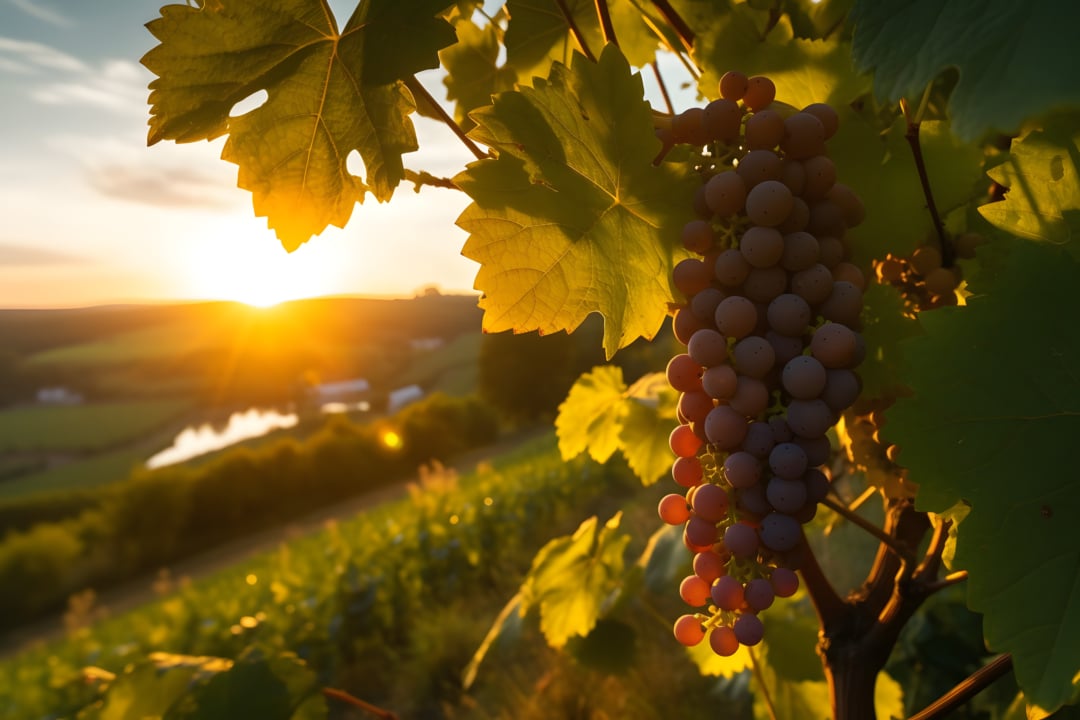5 Health Benefits of Oregano & 5 Side Effects (+ Tips for Uses)

Not only is oregano is a popular herb that adds a special flavor to Mediterranean dishes, but the plant also has great healing properties and is considered a natural antibiotic, among other things. Here you can learn about how oregano benefits your health and what it is good for.
Whether it’s pizza, pasta, meat or fish, oregano’s slightly tangy, aromatic flavor is a wonderful match for Mediterranean cuisine. Its use as a herb in cooking, however, has not been common for all that long, because its benefits as a medicinal herb took center stage for a long time and people valued it as a tried-and-tested remedy even as far back as in ancient times.
Interesting Facts About Oregano

Interesting Facts About Oregano
Although oregano is used as a herb in almost every kitchen, only very few people know about the special properties this plant possesses. Read on to find out some interesting facts about its origin, appearance and taste, as well as how you can dry the herb yourself.
Origin and History
Originally, oregano comes from the Mediterranean region because of the optimal growing conditions there. Today, the aromatic herb also grows in other parts of the world with temperate and warm climates, such as in Asia, Central America, North America and Europe.
For many centuries, the plant was mainly used for its healing properties and even the ancient Greeks appreciated the healthy ingredients oregano contains. Therefore, the name comes from the Greek words oros, meaning "mountain", and ganos, meaning "joy".
Oregano is rich in healthy essential oils, which mainly consist of the substances thymol and carvacrol. It also contains the powerful analgesic substance p-cymene, as well as vitamins C, B and K, and minerals such as iron, potassium, calcium, magnesium and zinc. Its tannins and bitter compounds also contribute to making the herb healthy.
Appearance and Taste

Appearance and Taste
Oregano – sometimes called wild marjoram or origanum – is a herbaceous plant which grows to a height of about twenty to sixty centimeters. The evergreen subshrub has numerous umbel-like inflorescences on which the leaves and flowers grow.
The leaves have an oval to elongated shape and are about three centimeters long. From late June to September, the plant bears delicate pink, white or purple flowers arranged in panicles.
Both leaves and flowers have a pleasant aromatic smell that attracts bees, butterflies and other insects. You can use both the fresh leaves and flowers to flavor food and as a medicinal remedy. Classically, however, the leaves are picked and then used in dried form.
The taste of oregano is strong, slightly bitter and pungent and this becomes more intense when the herb is dried because the content of essential oils becomes more concentrated. Even small amounts of the dried herb can give dishes a delicately sharp flavor.
This intense flavor distinguishes the aromatic plant from its close relative majoram, which is mild and slightly sweet. Both herbs belong to the Origanum genus and have a similar appearance. This is why the term wild marjoram is often used to refer to oregano. However, these are two different plants.
How to Pronounce "Oregano"

How to Pronounce "Oregano"
Oregano is a word that is often mispronounced. The way people pronounce it differs, and sometimes significantly.
While many emphasize the "A" of the third syllable, others emphasize the "E" of the second syllable or even the "O".
The correct way to pronounce oregano is with the emphasis on the "E" of the second syllable, as specified in the dictionary.
How to Grow Oregano

How to Grow Oregano
The aromatic herb is easy to grow in your garden or on your balcony. You can either grow it from the seed yourself or buy a small plant, which you then plant up in a patch or pot in the springtime.
Oregano prefers dry, well-drained soil and a warm, sunny location. The warmer and sunnier the spot, the better and more intense the flavor.
The perennial plant is hardy and, if planted in a patch, only needs to be protected with fir branches on very icy days. If planted in a pot, however, it generally needs protection when it turns frosty.
Otherwise, the plant is easy to care for and only needs moderate watering during longer dry periods. You can continuously pick fresh leaves and shoot tips during its growing season from spring to fall. The ideal time for harvesting a large quantity is in July and August, when its taste and healing power are at their strongest.
It is best to harvest the herb in the late morning on a warm and dry day. This is when the plant has the best aroma. Cut the shoots off with scissors or a sharp knife about a hand’s width above the ground.
- Before drying the herb out, you should remove any diseased parts and shake the branches to remove dirt and insects.
- Then tie several shoots into small bunches and hang them upside down to dry in a warm, dark and well-ventilated place where the temperature is between 68°F and 86°F.
- You can bring the drying process to an end when the leaves rustle between your fingers and the stems break when bent.
- Then strip the leaves and flowers from the stems and crush them.
- Store the crushed herb in an airtight container in a cool, dark place to preserve its aroma.
Oregano Nutrition Facts and Calories
Take a look at our nutritional content table below to gain an insight into the minerals and vitamins in oregano, as well as to find out some information on the calories it contains.
| Components | 1 tsp Dried Oregano Leaves (1 g) |
|---|---|
| Calories | 2.7 kcal |
| Water | 0.10 g |
| Total Fat | 0.04 g |
| Total Carbohydrate | 0.7 g |
| Dietary Fiber | 0.4 g |
| Sugar | 0 g |
| Protein | 0.1 g |
| Minerals | |
| Sodium | 0.3 mg |
| Potassium | 13 mg |
| Iron | 0.4 mg |
| Calcium | 16 mg |
| Magnesium | 2.70 mg |
| Zinc | 0.03 mg |
| Vitamins | |
| Vitamin A | 0.85 mcg |
| Vitamin B3 (Niacin) | 0.046 mg |
| Vitamin B6 | 0.010 mg |
| Vitamin E | 0.18 mg |
| Vitamin K | 6.2 mcg |
Health Benefits of Oregano

Health Benefits of Oregano
Oregano has been used as a remedy in folk medicine since the Middle Ages. The aromatic herb is known for its healing powers and can provide relief from a wide variety of ailments.
Benefits of Oregano for Respiratory Ailments
Oregano is rich in essential oils, about 85 percent of which are made up of carvacrol and thymol. These have been shown to have a beneficial effect on respiratory diseases.
Carvacrol has antibacterial and anti-inflammatory effects as well as analgesic and warming properties, which can be beneficial for throat pain and coughs.
Thymol kills germs and is especially good for helping cure colds involving a runny nose, cough and sinusitis.
The herb also helps with persistent respiratory infections such as bronchitis and tonsillitis. It even brings relief from earache, as it kills bacteria, relieves pain and promotes circulation. In addition, it is expectorant and improves the healing process.
Oregano Benefits Cell Protection

Oregano Benefits Cell Protection
The medicinal herb has a strong antioxidant effect, which traps free radicals in cells and, in doing so, helps cell preservation.
Free radicals attack your body’s cells and can trigger chronic diseases. They also facilitate premature skin aging. Excessive drinking, smoking and sunbathing mean oxidative stress for your body and make it necessary to compensate with antioxidants.
The antioxidant effect of oregano, together with the phytochemicals thymol and carvacrol the herb contains, may also have the ability to inhibit the division of cancer cells and kill tumor cells too.
Oregano Helps to Control Bacteria
Oregano oil is considered the strongest natural antibiotic. This makes it a valuable alternative for people who have developed resistance to antibiotics.
In recent years, there has been a significant increase in the number of pathogens that have little or no response to antibiotics. The dreaded staphylococcal variant MRSA (methicillin-resistant Staphylococcus aureus), for example, can hardly be controlled, even in hospitals, and leads to many deaths.
Several clinical studies have shown that the essential oils carvacrol and thymol contained in oregano are highly effective in combating many bacteria and even MRSA, especially when combined with blackcurrant.
Oregano Helps with Gastrointestinal Problems

Oregano Helps with Gastrointestinal Problems
Oregano is a proven remedy for gastrointestinal problems. The medicinal herb has an antispasmodic effect, helps with intestinal fungus and promotes digestion.
Oregano oil, in particular, promotes healthy gut flora. It has anti-inflammatory properties, is effective against parasite infestation, gets rid of yeast from the intestines, promotes blood circulation, and fights viruses and bacteria.
It also stimulates the production of gastric juice, which has a positive effect on your digestion.
Certain fibers contained in the herb are said to be able to bind toxins and bile salts in the gastrointestinal tract so that they can be naturally drained from the body. This is also said to lower cholesterol levels.
Benefits of Oregano for Fungal Diseases

Benefits of Oregano for Fungal Diseases
Oregano is an old home remedy against nail fungus and the yeast candida, which can settle on our mucous membranes in our genital area, mouth, throat and intestines.
The thymol in oregano has a strong anti-fungal effect, as does the ingredient carvacrol. Unlike conventional antifungals, oregano oil fights off candida without the yeast becoming immune to the active ingredients. Thus, the oil remains highly effective even with prolonged use.
You can use the essential oil both externally and internally to treat fungal diseases.
Is Oregano Good for You?

Is Oregano Good for You?
As we’ve just talked about, orgeano has many benefits for your health. Its essential oils and antioxidant effects make oregano a healing herb that helps with colds, kills bacteria and protects your cells.
It soothes the stomach and intestines and can even be used to combat athlete’s foot infections. Oregano also has analgesic and warming properties. In addition, it is expectorant and therefore helps to treat coughs.
In conclusion, not only is oregano a real plus for your physical health, but for your taste buds and recipes too.
However, oregano is not good for everybody per se. Besides the benefits of oregano, there are also some side effects that need to be considered, especially if you suffer from an iron deficiency or take blood-thinning medication.
Side Effects of Oregano

Allergic Reactions as a Side Effect of Oregano
In some cases, you should be careful when using oregano because the medicinal herb can have some unpleasant side effects. Below we explain some of the risks that may arise from eating oregano.
Allergic Reactions
Oregano belongs to the Labiatae family and may cause you to have an allergic reaction. If you notice any itching, rashes or shortness of breath in connection with using oregano, you should go to the doctor immediately and check whether you have an allergy.
Inhibition of Iron Absorption
Since the medicinal herb inhibits iron absorption, it’s best to take the highly-concentrated oregano oil two hours before or after eating. This is especially applicable if you suffer from an iron deficiency.
Oregano Can Induce Labor in Pregnant Women

Oregano May Induce Labor in Pregnant Women
If you are pregnant, you should only use small amounts of oregano in your recipes because the herb can trigger premature labor when eaten in large amounts. You should completely avoid oregano as an oil and in tea because these contain particularly high concentrations of the herb’s ingredients.
During pregnancy, your body needs a lot of folic acid for the healthy development of your baby so the consumption of spinach or pistachios is recommended.
Oregano Thins the Blood
If you take blood-thinning medication, oregano can further increase this effect and it may also cause bleeding disorders to worsen. Therefore, you should only eat the herb in small amounts if this is the case.
If you plan to have surgery and also suffer from a bleeding disorder or take medication like aspirin, heparin or warfarin, you must stop eating oregano at least two weeks beforehand.
Liver Damage from Contaminated Oregano

Liver Damage from Contaminated Oregano
In recent years, there have been several reports of carcinogenic substances being found in dried oregano. In response to these reports, numerous products available on our supermarket shelves were tested for harmful substances. The results were alarming.
In January 2020, several products were recalled, including from many well-known manufacturers. The samples were so heavily contaminated with pyrrolizidine alkaloids (PA) that there was a significant health risk for consumers. PAs can damage the liver and be carcinogenic if consumed regularly.
This high contamination was caused by plants that look the same and weeds with a high PA content. Oregano itself does not produce PA according to current knowledge.
What Is Oregano Good For?
You can buy oregano as a plant, dried herb or rich essential oil. There are also oregano oil capsules so you can take the exact dose you need. Read on to find out what the plant is good for and the different ways of using it.
Oregano Tea for Colds, Digestive Problems and Loss of Appetite

Oregano Tea for Digestive Problems
For digestive problems, loss of appetite and respiratory ailments involving a cough or sore throat, oregano tea can provide quick relief. There are several ways you can prepare the healing tea.
To make your tea, pour a quarter of a liter of hot water over one to two teaspoons of dried oregano or twice the amount of the fresh herb and let it sit for five to ten minutes. If you don’t have a tea infuser, you’ll need to strain the herb away before drinking.
The tea has a tangy taste, which is characteristic of the herb. For coughs and sore throats, you can use a spoonful of honey to sweeten it. In case of digestive problems and loss of appetite, drink the tea unsweetened. You can drink a maximum of three cups of oregano tea a day.
A tea for gargling rather than drinking needs a lot of medicinal properties, so you should use three teaspoons of dried oregano or six teaspoons of the fresh herb. Brew the herb with a cup of water and let the tea steep for at least ten minutes.
For sore throats, gargle with the lukewarm tea for several minutes up to six times a day.
Oregano Broth as a Bath Additive for Colds

Oregano Broth as a Bath Additive for Colds
Oregano broth is an effective remedy for respiratory diseases. The essential oils are especially good for bronchial complaints, colds and rhinitis.
To prepare a bath with oregano broth to treat a cold, you need about fifty grams of dried oregano. Pour a liter of boiling water over the herb and let the mixture steep for fifteen minutes. Then draw a bath and add the broth. You should go to bed very shortly after the bath.
Here you can learn how to make your own vegetable broth.
Oregano Essential Oil Benefits Many Ailments

Oregano Oil Benefits Many Ailments
Oregano oil is particularly rich in healthy ingredients. You can use it as a remedy for a wide array of ailments. High quality is important to get the full effect from the valuable essential oils.
If you suffer from nail fungus or cuticle inflammation, mix a drop of oregano oil with another neutral oil in a ratio of 1:10 and massage the mixture into the affected area several times a day.
For muscle tension, you can easily make an effective massage oil. Mix about fifteen drops of oregano oil with 100 milliliters of a neutral massage oil. Massage aching joints and tense spots with the oil mixture several times a day.
If you want to make a mixture to inhale, add up to five drops of the oil to one liter of hot water. Make sure that the water has a temperature of at least 176° Fahrenheit so you can get the full effect of the essential oils.
You can fight inflammation of the mouth and throat by adding three drops of oil to a glass of water and gargling or rinsing your mouth out with the mixture several times a day.
For stomach ailments, you should mix the healing oil with olive or another cooking oil in a 1:20 ratio and take one tablespoon of it daily.
Oregano Oil Capsules as a Practical Alternative

Alternatives: Oregano Oil Capsules
Oregano oil capsules are a nutritional supplement and designed to provide your body with valuable ingredients. They contain oregano oil in powder form and are rich in essential oils.
The products on offer are designed to strengthen your immune system, stimulate metabolism and support normal digestion. Generally speaking, you’ll need to take one to two capsules a day to benefit from these effects.





